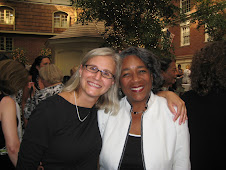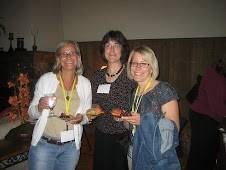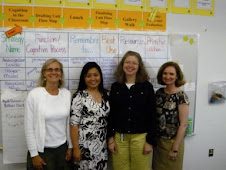- Teachers create a list of words from the text that are somewhat familiar to the students but that need some elaboration for full mastery.
- Students select a vocabulary word from the list of words provided by the teacher.
- Students take a piece of paper and fold it hot dog (i.e. landscape) style. Then they fold the paper in thirds to create a brochure/booklet.
- On the front page of the booklet, the student writes the vocabulary word. (panel 1)
- Opening the booklet, the student writes a sentence defining the word on the left-most panel. (panel 2) If students need to look up their words in the dictionary, they cannot simply copy the dictionary definition here. Students need to make their own personal meaning and their own sentence.
- In the middle inside panel (panel 3), students draw a visual of the word and write a first person sentence using the word. This first person sentence makes the word culturally relevant to the student.
- On the right-most panel (panel 4) students write down as many forms of the word as they can to demonstrate their knowledge of morphology.
- On the two panels that would appear on the back of the brochure when opened up, students write synonyms on one panel (panel 5) and antonyms on the other panel (panel 6).
- Once students have finished their vocabulary tri-folds, they move around the room until the music stops. Then they pick a partner, and the partners take turns teaching each other the word.
- The teacher allows for several rounds of mixing it up during the music and teaching vocabulary words when the music stops.
The English 10 teachers at that NUA site visit liked the kinesthetic appeal of the vocabulary tri-fold strategy and wanted to try it with essay instruction, so we adapted the panels to reflect the parts of an essay. As synthesis after instruction on each part of the essay, students wrote a few key ideas about that topic on the appropriate panel of their essay tri-fold.
Here's how we adapted the panels for a literary analysis essay on The Odyssey:
- Essay topic and title
- Introduction with attention-getter and The Odyssey by Homer (so they remembered to include that)
- Thesis statement
- Body Paragraph structure including transition, topic sentence, 2 PIEs (point, illustration, explanation), and recap sentence.
- Conclusion with circling back to attention-getter and a reason for the reader to care about the topic.
- Modern Language Association (MLA) essay formatting, works cited, and in-text citation information.
The students ended essay week with a visual that we called "essay in your pocket."
One student emailed his English 10 teacher, Rachel Tholen, and had this to say about the tri-fold, pocket essay.
"I really like the way you're approaching this paper. I found the little "5 Paragraph Essay" booklet helpful, and also just the sort of "I'll hold your hand" approach, because myself, along with many other of my classmates are... well basically clueless when it comes to essay formatting. Okay, not clueless, just not very well educated. So, to sum things up, thanks."






